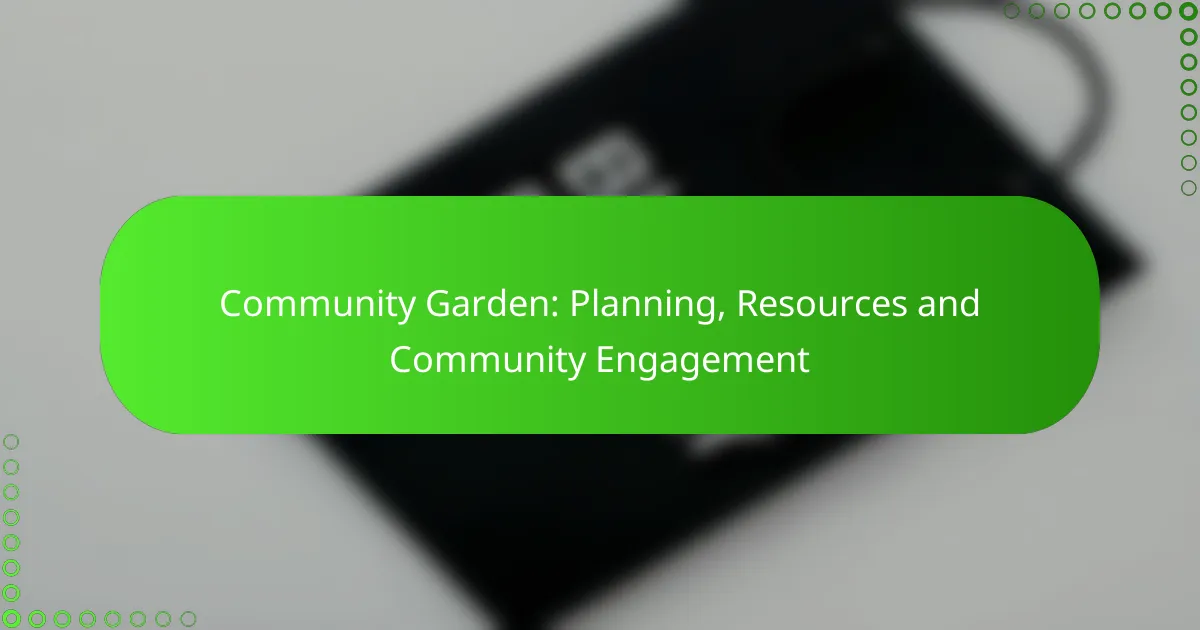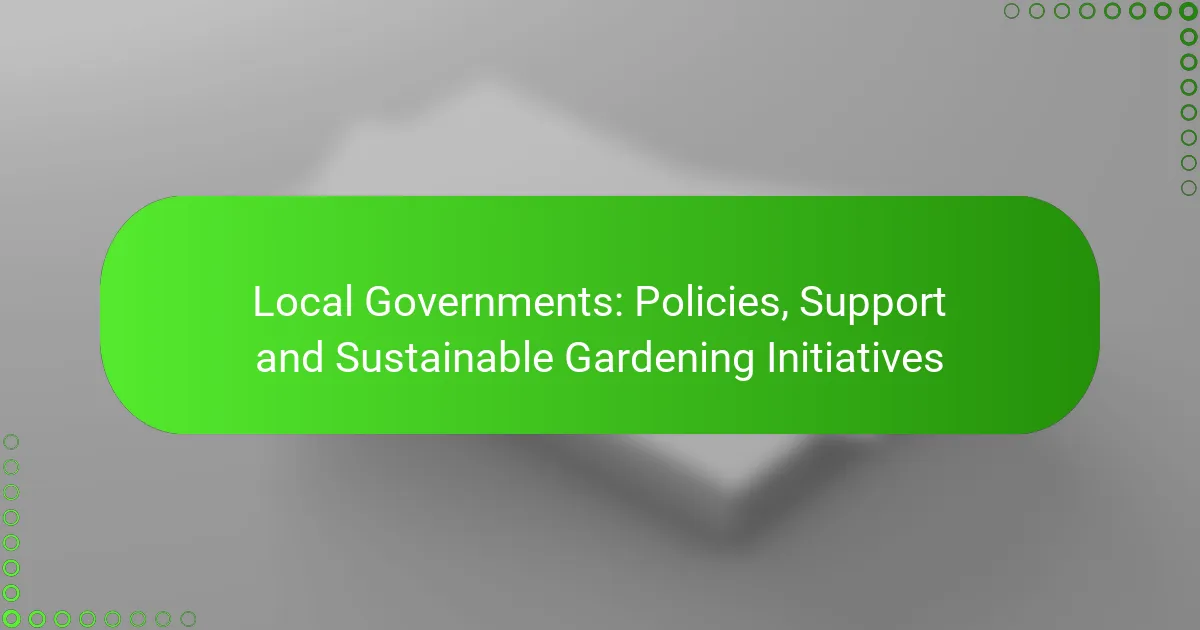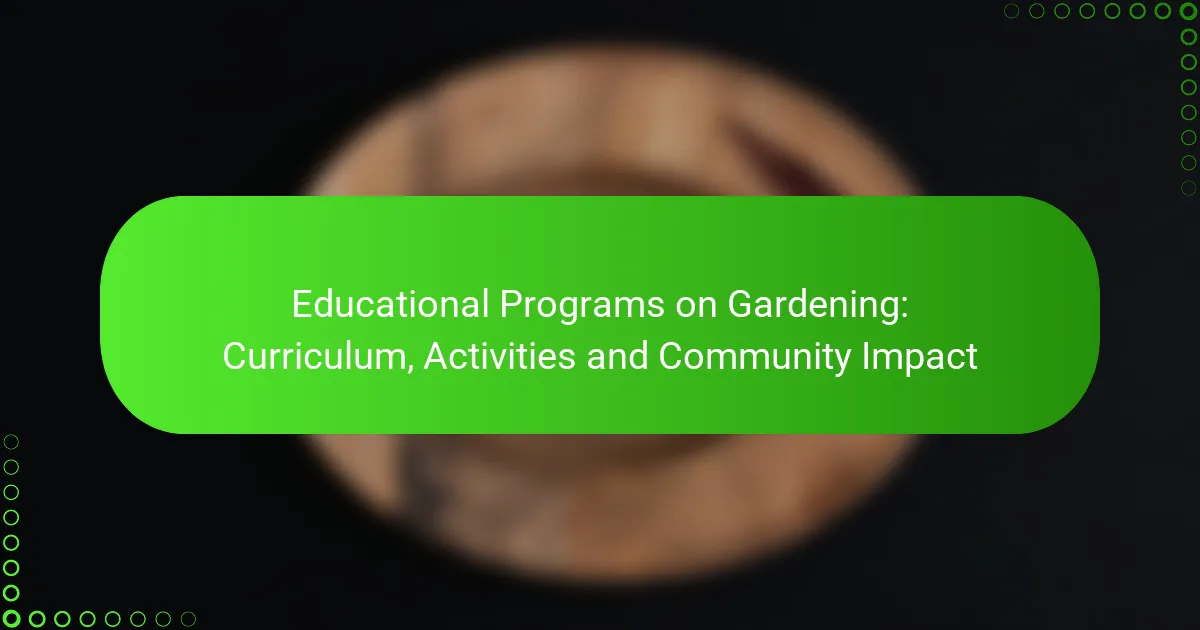Planning a community garden in South Africa requires careful assessment of local needs, site selection, and active community engagement. By understanding the climate and available resources, organizers can create a thriving space that reflects the interests of potential gardeners. Accessing local government programs and non-profit grants can provide essential support, while fostering community involvement ensures a sense of ownership and sustainability for the garden project.
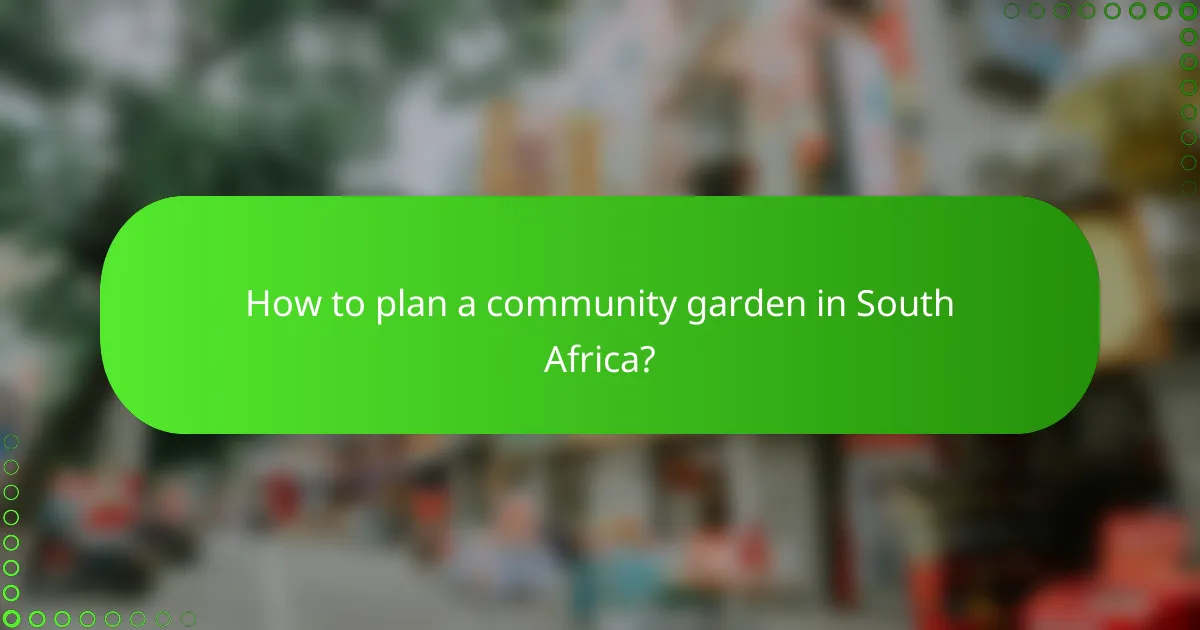
How to plan a community garden in South Africa?
Planning a community garden in South Africa involves assessing local needs, selecting an appropriate site, and engaging the community. Key considerations include understanding the climate, available resources, and the interests of potential gardeners.
Site selection criteria
Choosing the right site is crucial for a successful community garden. Look for locations with adequate sunlight, access to water, and good soil drainage. Proximity to public transport and community centers can also enhance participation.
Consider potential challenges such as security and land ownership. Engaging with local authorities can provide insights into zoning regulations and available public lands suitable for gardening.
Essential tools and materials
Basic tools for a community garden include shovels, rakes, hoes, and watering cans. Additionally, consider investing in compost bins and raised beds to improve soil quality and accessibility.
Gathering materials such as seeds, soil amendments, and mulch is essential. Local gardening stores or community donations can help reduce costs and encourage community involvement.
Garden layout design
Designing the layout of the garden should prioritize accessibility and efficient use of space. Raised beds can help maximize yield while making maintenance easier for all gardeners.
Incorporate pathways to facilitate movement and ensure that all areas are reachable. Consider using a grid system to organize planting areas, which can help in crop rotation and companion planting strategies.
Soil preparation techniques
Preparing the soil is vital for healthy plant growth. Start by testing the soil for pH and nutrient levels, which can inform necessary amendments. Adding organic matter, such as compost, can significantly enhance soil fertility.
Techniques like double digging or lasagna gardening can improve soil structure and aeration. Regularly turning the soil and adding mulch can help retain moisture and suppress weeds.
Plant selection for local climate
Selecting plants that thrive in South Africa’s diverse climates is essential. Consider native species that are well-adapted to local conditions and require less water and maintenance.
Consult local gardening resources or extension services for advice on seasonal planting and crop rotation. Popular choices include tomatoes, peppers, and leafy greens, which tend to perform well in various regions.

What resources are available for community gardens?
Community gardens can access a variety of resources, including local government programs, non-profit grants, and online guides. These resources help with funding, planning, and support for successful garden initiatives.
Local government support programs
Many local governments offer support programs specifically designed for community gardens. These may include grants, land access, or technical assistance. It’s beneficial to check with city or county agricultural departments for available resources.
Some municipalities have established community garden ordinances that outline the requirements and benefits for gardeners. Understanding these regulations can help in navigating the application process and ensuring compliance.
Non-profit organizations offering grants
Numerous non-profit organizations provide grants to support community gardening efforts. These grants can cover costs such as seeds, tools, and educational workshops. Organizations like the American Community Gardening Association and local food banks often have funding opportunities.
When applying for grants, it’s crucial to have a clear project plan and budget. Tailor your proposals to align with the mission of the funding organization to increase your chances of success.
Online resources and guides
There are many online resources available to assist community gardeners. Websites such as the National Gardening Association offer extensive guides on starting and maintaining a garden, including best practices for soil health and pest management.
Additionally, social media platforms and gardening forums can provide community support and shared experiences. Engaging with these online communities can offer valuable insights and practical tips from seasoned gardeners.
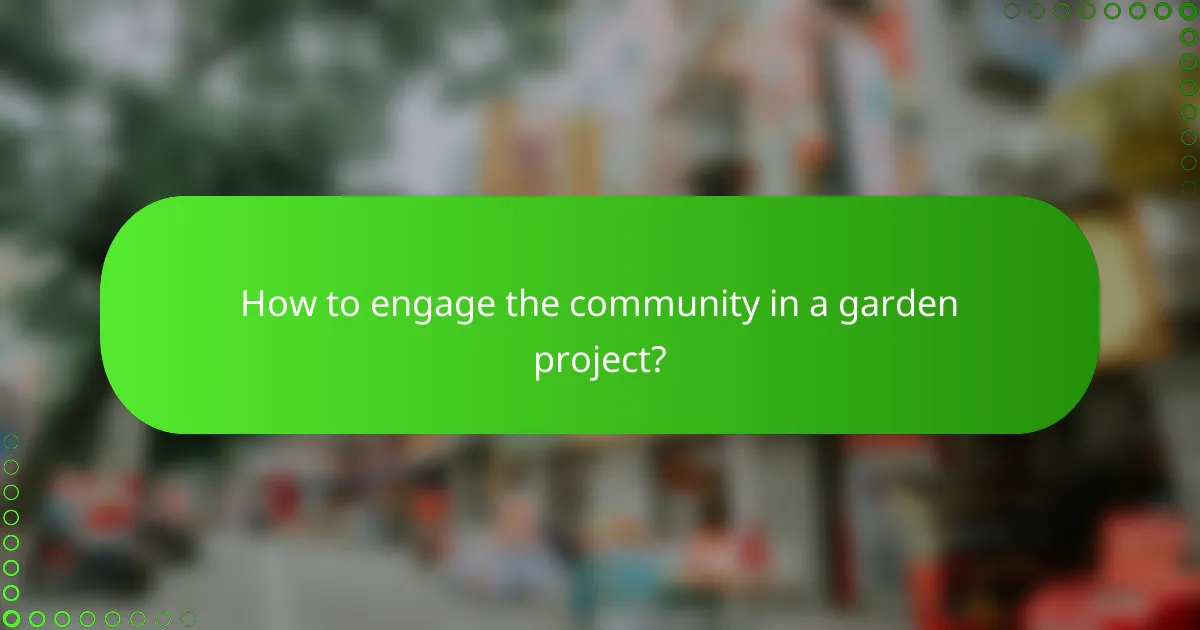
How to engage the community in a garden project?
Engaging the community in a garden project involves creating opportunities for participation and fostering a sense of ownership among local residents. Effective engagement strategies can lead to increased support, volunteerism, and a thriving garden that reflects the community’s needs and values.
Community outreach strategies
To effectively reach out to the community, utilize various channels such as social media, local newspapers, and community bulletin boards. Hosting informational meetings or open houses can also help generate interest and gather feedback from potential participants.
Consider collaborating with local organizations, schools, and businesses to expand your outreach efforts. Partnerships can enhance credibility and provide additional resources, making it easier to connect with a wider audience.
Volunteer recruitment methods
Recruiting volunteers can be achieved through targeted campaigns that highlight the benefits of participation, such as skill development and community bonding. Use flyers, social media posts, and word-of-mouth to spread the word about volunteer opportunities.
Offering incentives, such as free workshops or community events, can motivate individuals to get involved. Make sure to clearly outline the roles and responsibilities of volunteers to ensure they feel valued and understand their contributions.
Workshops and educational programs
Hosting workshops and educational programs can engage community members by teaching them gardening skills and sustainable practices. Topics may include composting, planting techniques, and pest management, tailored to the interests of local participants.
Consider partnering with local experts or organizations to provide these educational sessions. Offering hands-on experiences can enhance learning and encourage ongoing participation in the garden project.

What are the benefits of community gardens?
Community gardens offer numerous advantages, including improved access to fresh produce, strengthened social ties, and positive environmental impacts. These gardens serve as vital resources for neighborhoods, enhancing food security and fostering a sense of belonging among residents.
Improved food security
Community gardens play a crucial role in enhancing food security by providing local access to fresh fruits and vegetables. They can help reduce reliance on grocery stores, particularly in food deserts where access to healthy options is limited.
By growing their own produce, community members can ensure a steady supply of nutritious food, which is especially beneficial for families on tight budgets. Additionally, these gardens can serve as educational platforms, teaching participants about sustainable gardening practices and nutrition.
Enhanced community cohesion
Community gardens foster a sense of belonging and collaboration among residents, creating stronger social networks. By working together on shared gardening projects, individuals can build friendships and develop a sense of ownership over their neighborhood.
These spaces often host events, workshops, and gatherings that encourage participation and inclusivity. Engaging in communal activities can help break down barriers and promote understanding among diverse groups within the community.
Environmental benefits
Community gardens contribute positively to the environment by promoting biodiversity and enhancing urban green spaces. They provide habitats for various species, including pollinators like bees and butterflies, which are essential for healthy ecosystems.
Furthermore, these gardens can improve air quality and reduce urban heat through increased vegetation. They also encourage sustainable practices, such as composting and organic gardening, which can lead to healthier soil and reduced waste in landfills.

What challenges do community gardens face?
Community gardens encounter various challenges that can hinder their success, including funding issues, land access, and community engagement. These obstacles require careful planning and collaboration to overcome.
Funding and Resource Allocation
Securing funding is a primary challenge for community gardens. Many rely on grants, donations, or fundraising events, which can be unpredictable. Establishing a clear budget and identifying potential funding sources early on can help mitigate financial uncertainties.
Resource allocation also plays a crucial role. Gardens need tools, seeds, and soil amendments, which require careful planning to ensure that resources are used efficiently. Forming partnerships with local businesses or nonprofits can provide additional support and resources.
Land Access and Legal Issues
Access to suitable land is often a significant barrier for community gardens. Finding available plots can be difficult, especially in urban areas where space is limited. Engaging with local authorities and understanding zoning laws can help identify potential land options.
Legal issues may also arise, such as land tenure and liability concerns. It’s essential to establish clear agreements with landowners and ensure compliance with local regulations to avoid disputes that could jeopardize the garden.
Community Engagement and Participation
Building a strong community around the garden is vital for its sustainability. Low participation can lead to a lack of interest and maintenance. Organizing regular meetings and events can foster a sense of ownership and encourage involvement from diverse community members.
Communication is key to engagement. Utilizing social media, newsletters, or community boards can keep everyone informed and motivated. Addressing the needs and preferences of community members will help ensure ongoing participation and support.






